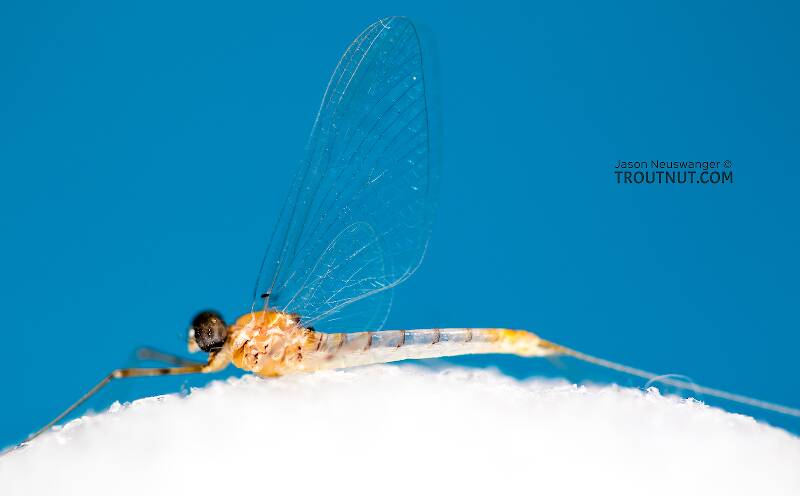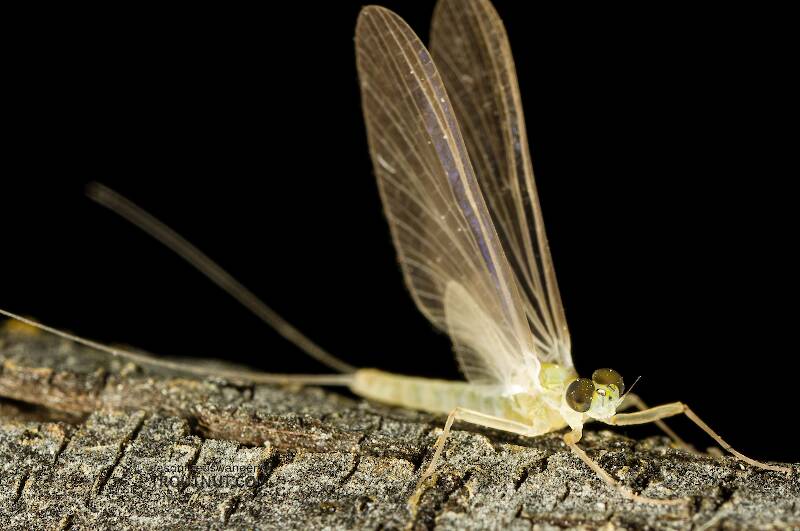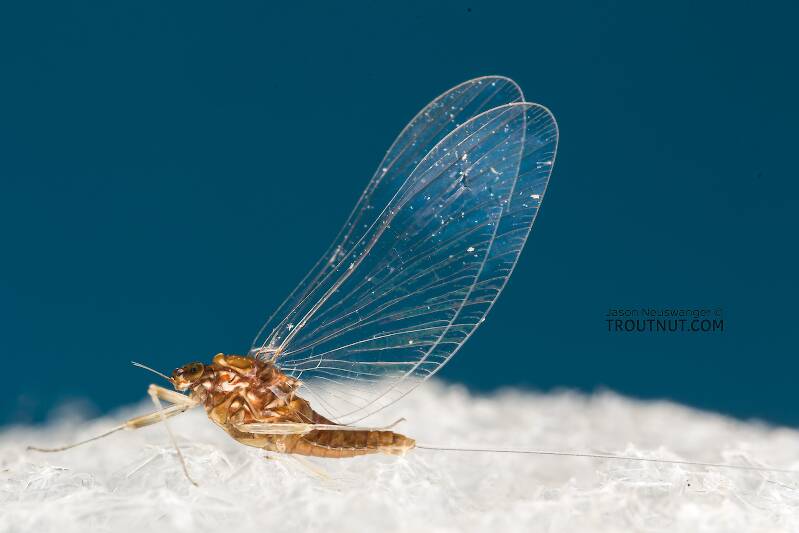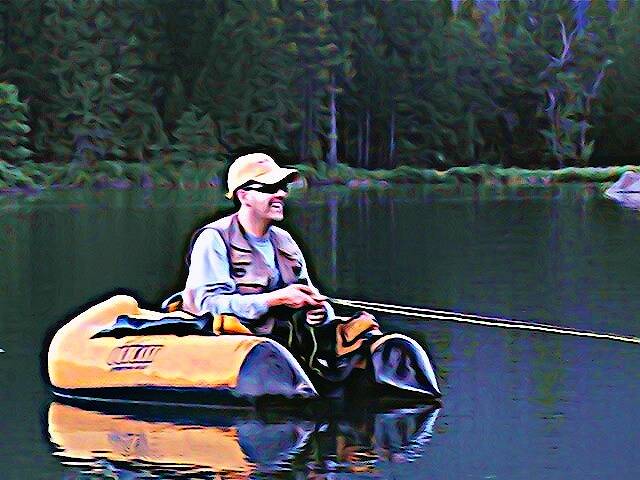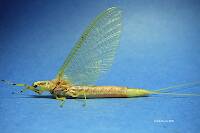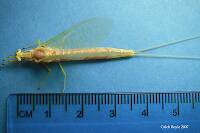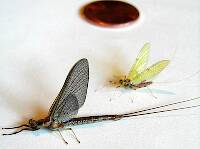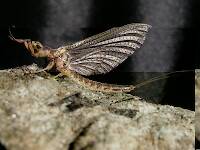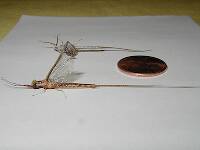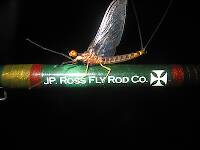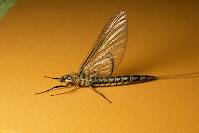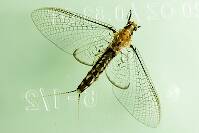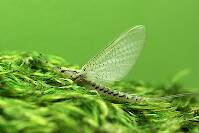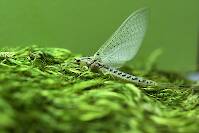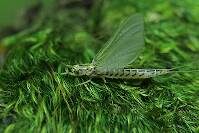
Hex Mayflies
Hexagenia limbata
The famous nocturnal Hex hatch of the Midwest (and a few other lucky locations) stirs to the surface mythically large brown trout that only touch streamers for the rest of the year.
Featured on the forum

This species was fairly abundant in a February sample of the upper Yakima.

Troutnut is a project started in 2003 by salmonid ecologist Jason "Troutnut" Neuswanger to help anglers and
fly tyers unabashedly embrace the entomological side of the sport. Learn more about Troutnut or
support the project for an enhanced experience here.
This topic is about the Insect Order Ephemeroptera
Mayflies may be the most important insects for trout anglers to understand. They are an ancient order of insects, famous outside the fly-fishing world for their fragile beauty and short adult lifespan, often a single day to mate and die. The mayfly's poignant drama attracts poets and anglers alike, but anglers make the most of it.Mayflies live more than 99% of their lives as nymphs on the river or lake bottom, filling many crucial roles in freshwater ecosystems as they feed and grow. They eventually emerge from the water as winged sub-adults called "subimagos" by scientists and "duns" by anglers. Duns evolved to be good at escaping the water, with a hydrophobic surface and hardy build, but they are clumsy fliers. Within a day or two they molt one last time into "imagos" or "spinners," the mature adults, a transformation captured in this photo series of a dun molting into a spinner. They have longer legs and tails, and sleeker, more lightweight bodies, giving them the airborne speed, agility, and long grasp they need for their midair mating rituals. They are usually darker than the duns and have shinier, more transparent wings. They die within minutes or hours after mating.
Example specimens
Hdhungryman on Aug 12, 2012August 12th, 2012, 9:42 pm EDT
These hex nymphs (approximately 50-100) were collected from a private waters lake in Big Bend, Caifornia the last week in May 2012. We located them in mostly soft, shallow fine mud conditions and also within the muddy root system of the plants located in the aquarium that you see in the video. The nymphs can be clearly observed in several states of development.
Though I did not personally observe a nymph emerging from its carapace/shuck, I did notice many adult hex flying within the cabin, 2 of which I photographed and placed within this video.
The Hexagenia Limbata may be one of the most important insects for trout anglers to understand.
http://www.youtube.com/watch?v=NXjlWgWa36A&feature=youtu.be
Though I did not personally observe a nymph emerging from its carapace/shuck, I did notice many adult hex flying within the cabin, 2 of which I photographed and placed within this video.
The Hexagenia Limbata may be one of the most important insects for trout anglers to understand.
http://www.youtube.com/watch?v=NXjlWgWa36A&feature=youtu.be
Quick Reply
Related Discussions
Topic
Replies
Last Reply
1
Aug 1, 2008
by Troutnut
by Troutnut


